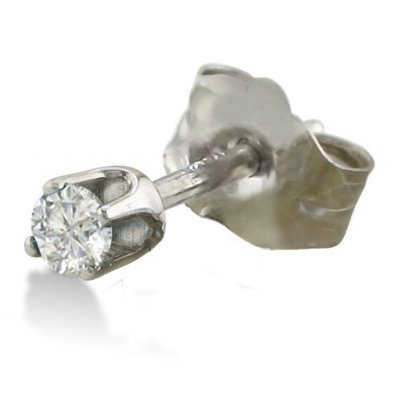I remember getting my ears pierced for the first time (out of many) at 4 years old. It's actually one of my first memories, even. My mom made it pleasant and fun and made sure I was responsible enough to help take good care of them. She also let me know that it WOULD hurt. In fact, the little girl that went before me was older, but bawled and screamed like it was hideously painful. It scared me, so we walked around the mall a bit before I was ready. I ended up not thinking it was that bad after all.
I intend on piercing my own daughter's ears when she's old enough, but unlike my own experience, I won't be taking her to a piercing booth in a mall, and I especially won't be having the piercings done with a piercing gun. The Association of Professional Piercers and Body Modification Ezine, two of the largest information sources on contemporary body modification, are BOTH against gun piercings. Why? I'll tell you.
Sanitation of the facility: Piercing parlors are required to thoroughly and regularly clean their piercing area (which consists of easy-to-clean materials like a doctor's chair) regularly, and only allow paying customers into the area to prevent any contamination of their sterile equipment.
A mall booth, on the other hand, can be touched by everyone who walks by, is often just a cloth stool in a highly trafficked area, and the only part of their equipment that is sterile is maybe the earring studs — which doesn't matter if the gun and gloves aren't.
Training of the piercer: Piercing artists undergo often one year or more of internships, take bloodborne pathogen courses, often take CPR just in case of a medical emergency with a client, have to learn about aftercare, potential medical problems, and proper jewelry choices for each piercing type, and have to watch procedures many times before being very closely monitored while learning to perform them.
A mall piercing employee often has one day of a seminar, or even a video, then practices a few times on a piece of cardboard with dots or a teddy bear. Sometimes pediatricians offer this procedure, but they're no more trained with a piercing gun than you are.

Quality of the equipment: A piercing needle is incredibly sharp and cuts a crescent shape that then gently folds down the excess skin to make room for the jewelry. It's a clean cut with clean edges in a shape that helps relieve pressure, and therefore healing is often quick. The procedure is notably less painful than other methods and is always, always sterile.
A piercing gun — originally designed for tagging the ears of cattle — cannot be sterile (except rare metal guns, which are only sterile if autoclaved after every single use). It carries the risk of passing blood-borne diseases such as Hepatitis and even HIV (alcohol wipes are NOT sterilization), in addition to any dirty hands or machinery that touched it in packaging, if it's a flimsy one-time-use gun. They are inaccurate at best, and use blunt force to actually rip a hole in the ear (yes, even the "sharp" piercing studs are still considered blunt). It also shoves a back on too tightly, which doesn't leave room for normal swelling, doesn't allow for airflow, causes too much pressure on the surrounding tissue, and often can even swell and prevent any healthy drainage. Ick.
Jewelry itself: Real piercers use sterile implant-grade stainless steel or titanium jewelry that is tailored to each individual piercing — the right shape, size, and width (gauge) to help allow proper healing, prevent migration, and also almost eliminate allergic reactions.

Piercing guns use cheap metal that almost always contains high levels of nickel despite the fact a good 15 percent or more of the population has a nickel allergy. The studs are so thin that they have a tendency to migrate into the healing flesh, and they are not long enough to allow for normal healing in even the thinnest earlobes. How many times do you hear "The skin will close over the back of the earring if you don't twist it!" This isn't because of twisting (which is not advisable nor healthy!) but because of improper jewelry to begin with. The butterfly back earrings also have so many grooves that they can trap bacteria against the new piercing wound.
The aftercare: Real piercers have been trained to not just hand you a bottle and piece of paper, but show you how to care for a piercing and help recognize potential problems and solve them.
Piercing booths hand you a bottle of cleaning solution that is about 99.8 percent water … and the remainder is Benzethonium Chloride, or they suggest a soap with Triclosan (like Dial) that actually damages healing tissue. Their healing care almost looks satirical to educated piercers, which includes twisting piercing daily, a move that unless the earring is totally free of "crusties" (dried healthy fluid) and totally clean, twists bacteria into and tears sensitive tissue in the newly healing piercing. BAD idea.
I know a lot of people don't want to take little children into piercing salons, under some false pretense that they're just like they were decades ago with slutty women and smoking bikers sitting around, but the truth is, if you can't take your child to the real professionals, you shouldn't have the procedure done. Wait until it can be a special, healthy memory, instead of something that has plenty of potential to go very wrong. You wouldn't have the Safeway bagger give you a flu shot, right? Don't let a store clerk pierce your children (or you!).
Did you know all this about piercings? Do you go to professionals?




